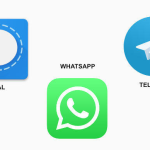Living with type 1 diabetes has always carried the fear of losing my eyesight. More than 40 years after my initial T1D diagnosis and many years since my first retinopathy diagnosis, diabetes is now threatening my vision.
In the past five years alone, I have undergone 16 laser treatments and received 6 eye injections. The sheer number of procedures is overwhelming, and I constantly worry about the day my eyes might fail me completely.
Recently, a new challenge emerged: a glaucoma diagnosis. This adds complexity to my ongoing battle with diabetic retinopathy and diabetic macular edema (DME). To manage this, I now rely on daily eye drops to reduce intraocular pressure and protect my vision.
Since early 2024, my right eye’s vision has deteriorated, marked by dark floaters that resemble a thin veil obscuring my sight. While I can still see, I often close that eye to briefly escape the distracting veil—especially on bright, sunny days or when staring at screens.
My eye health journey is filled with challenges, and I continue to face them head-on.
Read More: The Powerful Connection Between Oral Health and Total Body Health
Fear of complications
For over a decade after my initial retinopathy diagnosis, my condition remained mild and required only diligent blood sugar management. However, the underlying fear of more serious complications always lingered.
Many people living with diabetes (PWDs), especially those diagnosed with type 1 diabetes (T1D) in childhood or adolescence, carry a constant anxiety about future complications. Years of managing diabetes increase the risk of serious health issues, and that fear can deeply affect daily life.
In the diabetes community, the term “fear of hypoglycemia” describes the intense worry about low blood sugar episodes, which can lead to running blood sugar levels higher than recommended to avoid lows—unfortunately raising the risk of long-term complications.
I propose another term: “fear of complications.” This fear shapes how many of us approach diabetes care, often overshadowing our mental well-being. The emotional and psychological toll of living with diabetes is significant and demands greater attention within healthcare.
Since my diagnosis, I’ve heard countless warnings about diabetes-related complications, including the heightened risk of eye diseases. Studies show that more than half of all people with diabetes will develop diabetic retinopathy or macular edema during their lifetime—numbers that are even higher for those with type 1 diabetes.
Facing my worst diabetes fears
In the summer of 2019, I discovered my retinopathy had progressed to a stage that required laser treatment. The news hit me hard—my heart raced, and tears welled up as my world felt like it was unraveling.
Although my eye doctor reassured me that the procedure was routine, my mind struggled to accept it. The fear of complications immediately overwhelmed any sense of calm or logic.
Friends and medical professionals who had undergone similar laser treatments encouraged me to stay calm, assuring me everything would be fine. Yet, despite their support, anxiety consumed me. This was unfamiliar territory, and uncertainty weighed heavily on my thoughts.
On the day of the procedure, nerves frayed my resolve. Sleepless the night before, the drive to the clinic felt agonizing, each moment building tension I couldn’t shake.
My retinopathy laser treatment
Despite my fears, I went ahead with the laser treatment. To my surprise, the procedure was neither painful nor frightening. In fact, it was less uncomfortable than a standard diabetes eye exam, where you have to keep your eyes open while staring at intensely bright lights.
Here’s what the treatment involved:
First, numbing and pupil-dilating drops were applied. A safety mark—a small X—was drawn above my left eye. Then, I rested my chin on the laser machine and focused on a small light as the doctor examined the inside of my eye. This part felt familiar and wasn’t intimidating at all.
Next came about 30 bright flashes of light, similar to rapid camera flashes in quick succession. This stage lasted roughly 20 minutes. Overall, the entire process took about 45 minutes, including waiting time for the drops to take effect.
That was it—my first experience with retinopathy laser treatment was surprisingly smooth. There was no pain or major inconvenience. Although my eye specialist had assured me it would be routine, I hadn’t fully trusted him—something I now regret.
Recovery was easy. My eye remained dilated for a while, but I faced no significant vision issues. We even enjoyed dinner and drinks shortly afterward, aside from occasional discomfort from bright lights.
Stress before the procedure caused a temporary rise in my blood sugar, peaking in the low 200s, but levels stabilized within a few hours and did not spike afterward.
In the days that followed, my left eye felt slightly itchy, and screen glare caused minor discomfort, but overall, the experience was manageable and reassuring.
Experiencing eye injections
That first laser treatment successfully addressed the immediate issue, but it was only the beginning. As my retinopathy progressed, diabetic macular edema (DME) developed, requiring additional treatments.
Nearly a year later, I experienced an eye hemorrhage in my right eye—the one that hadn’t needed treatment before. Suddenly, dark floaters appeared, triggering panic and tears. This was the first time my vision was noticeably affected by retinopathy.
The retinal specialist described my condition as a “critical, vision-impacting emergency.” A small blood vessel had burst, causing blood leakage in my retina and resulting in the floaters.
The next step was an eye injection.
Several medications are available for diabetes-related retinopathy, but my doctor recommended Avastin—the oldest option. Originally developed for cancer treatment, Avastin is used off-label to slow abnormal blood vessel growth in diabetic eye disease. It is a cost-effective, first-line treatment with proven effectiveness comparable to newer, pricier injections.
The procedure started with numbing drops, followed by the injection. Despite my fear of a needle near my eye, the experience was surprisingly quick and almost painless. The injection entered from the side of my vision field, and the numbing drops limited sensation to a brief pinch lasting only seconds.
Later that day, my vision returned to normal. I experienced occasional burning, similar to the discomfort from bright lights, causing me to briefly close my eyes and wipe away tears.
As expected, the blood causing the floaters gradually cleared, improving my vision and easing my anxiety
Frequently Asked Questions
What is diabetic retinopathy and how does it affect vision?
Diabetic retinopathy is an eye condition caused by damage to the blood vessels in the retina due to diabetes. It can lead to vision problems, including blurred vision, floaters, and in severe cases, vision loss.
How did retinopathy progress in your case?
Initially, my retinopathy was mild and managed through strict blood sugar control. Over time, it progressed to require laser treatments and later, injections to manage complications like diabetic macular edema (DME) and hemorrhages.
What treatments are available for diabetic retinopathy?
Common treatments include laser therapy to seal leaking blood vessels and reduce swelling, and anti-VEGF eye injections such as Avastin to slow abnormal blood vessel growth and manage edema.
What can patients expect during laser treatment for retinopathy?
Laser treatment is typically routine and involves numbing eye drops, pupil dilation, and a series of brief laser flashes. The procedure usually lasts under an hour and is generally well tolerated.
How do eye injections for retinopathy work and are they painful?
Eye injections deliver medication directly into the eye to reduce swelling and abnormal blood vessels. Thanks to numbing drops, the procedure causes minimal discomfort—usually a quick pinch sensation lasting just seconds.
How does fear impact managing diabetic eye complications?
Fear of complications or treatments can cause anxiety and affect diabetes management. Connecting with others and understanding the treatment process often helps reduce stress and improve coping.
What lifestyle changes help in managing diabetic retinopathy?
Maintaining optimal blood sugar levels, regular eye exams, and following medical advice for treatments are crucial to slowing the progression of diabetic retinopathy.
Conclusion
My journey with diabetic retinopathy is a continuous process of adaptation, treatment, and hope. Despite the challenges and fears that come with progressive eye disease, early detection and timely interventions like laser therapy and eye injections can preserve vision and improve quality of life. Staying proactive with regular eye exams, maintaining optimal blood sugar levels, and addressing the emotional impact of diabetes complications are essential steps in managing this condition. Sharing my story aims to raise awareness and encourage others living with diabetes to prioritize their eye health and seek support when needed.











